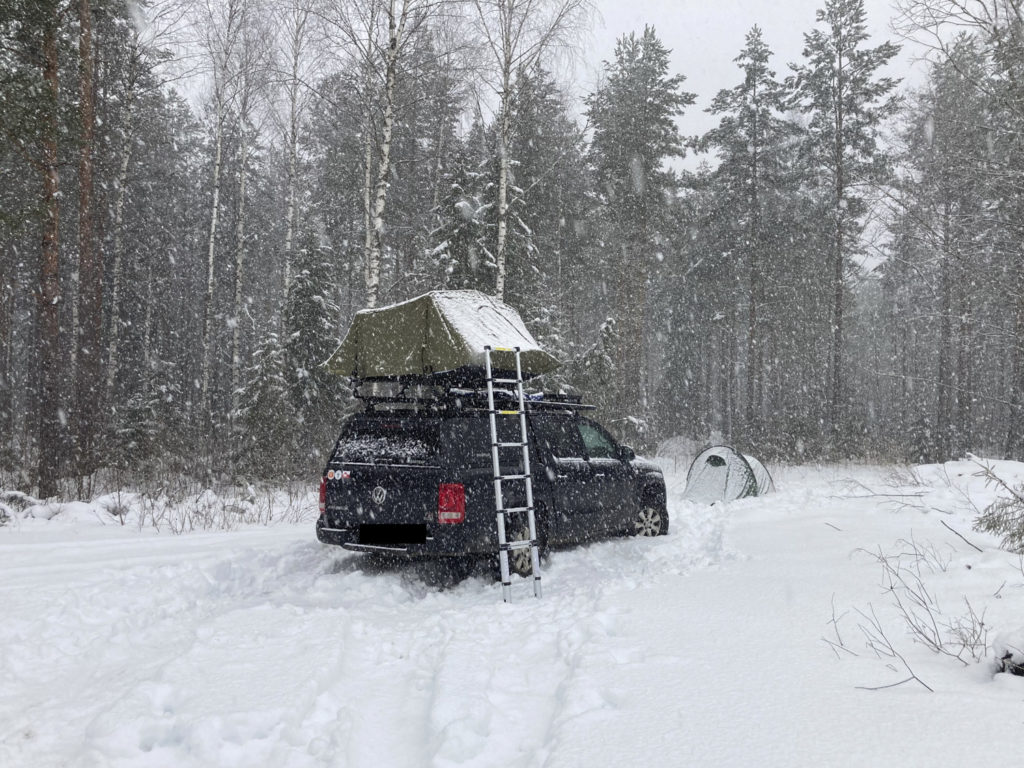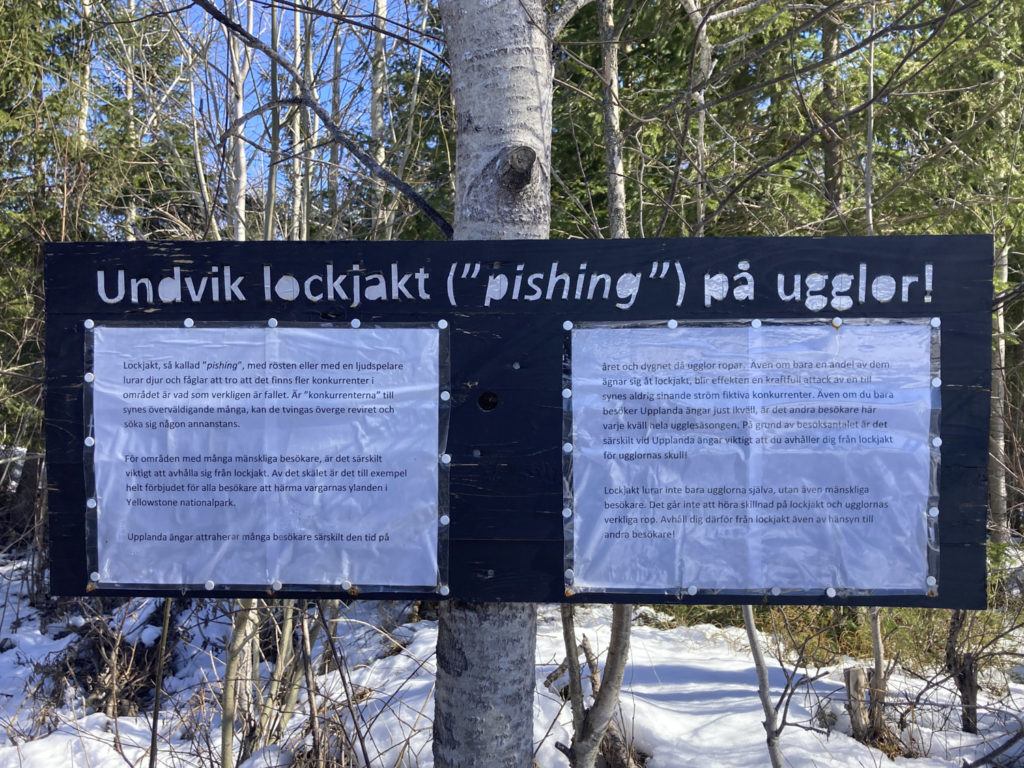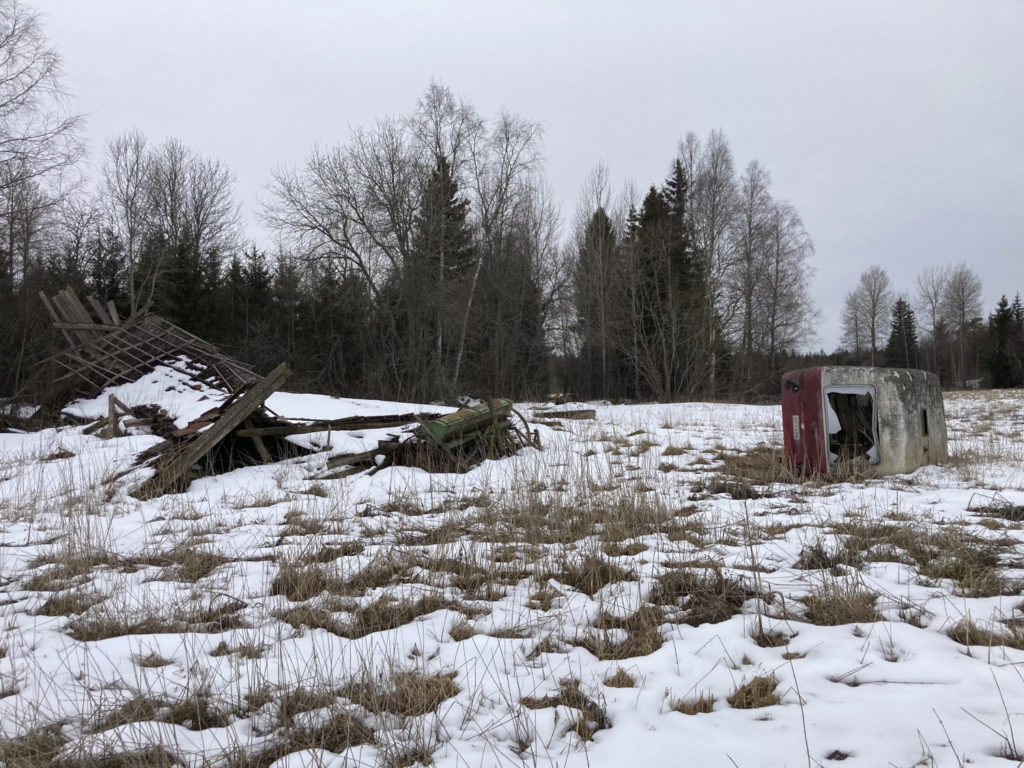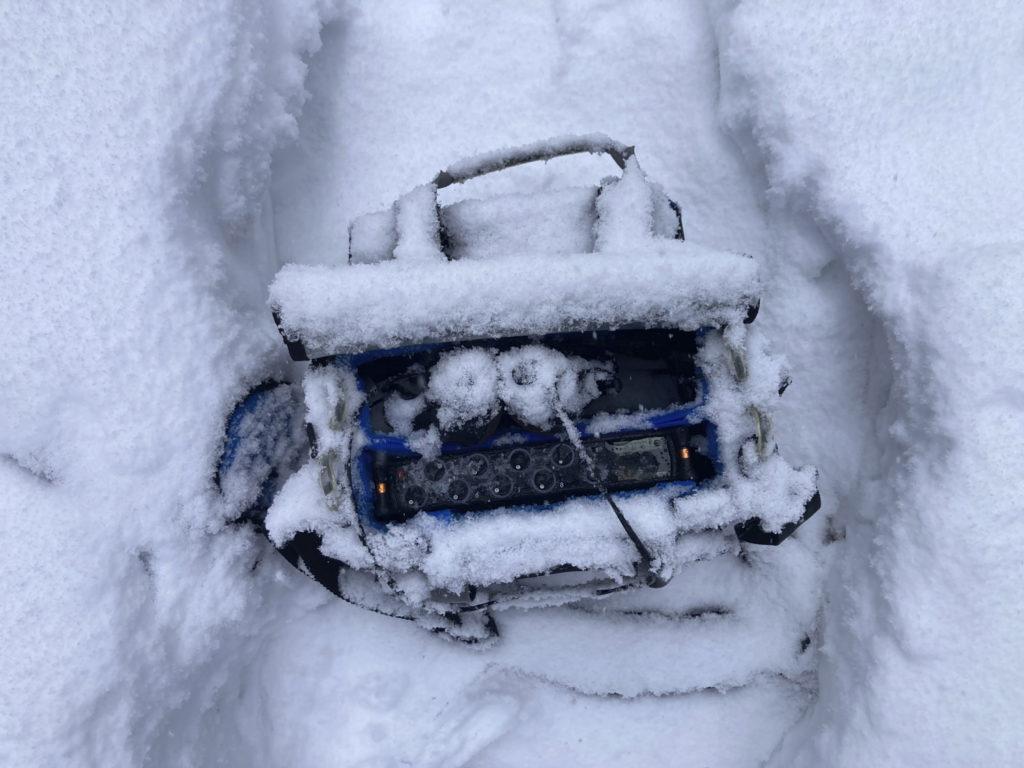June 2022
In 2013 I met Peter, an experienced ornithologist and wildlife sound recordist from the
Netherlands. On sporadic visits over the years, we always talked about possible recording
trips together. In April the time had come, we went to Central Sweden.
Travel planning and research were in his hands, as he knew the target area and also had
contacts to local folks. We ended up in the area around Uppsala. The plan was to record grouse,
woodpeckers and owls.
On the journey we were slightly surprised by the onset of winter. In the target area there was
a lot of snow. Wonderful.
melting snow, Ambisonics to binaural


To my astonishment that changed with the days in anger, I had to learn that apparently large-scale
logging was going on seemingly everywhere. Even during our ten days stay, harvesters were to be
heard regularly.
Since grouse are very sensitive to disturbance, we could consequently observe only a handful
of Black Grouse Lyrurus tetrix. There was no sign of Western Capercaillie Tetrao urogallus, a single
Hazel Grouse Tetrastes bonasia could only be heard very briefly.
At least these migrating Bohemian Waxwings Bombycilla garrulus could provide a short cheer.
A habitat described by Peter as ‘the most beautiful forest I have ever seen’, was replaced by
a holiday resort. Shocking.
Black Grouse Lyrurus tetrix, female, flight call, wing sound
Brambling Fringilla montifringilla, male, (plastic) song

Ural Owl Strix uralensis, two males, song (hooting), female, soliciting call
Ural Owl Strix uralensis, M song, F soliciting call, chitter, guard call
A male intruder started to hoot(sing) in an occupied territory. The resident female’s response was this
soliciting call, the resident male started to hoot as well. After two (!) hours, the resident birds met and
the chitter and guard call could be heard.


Common Blackbird Turdus merula, male song
Eurasian Woodcock Scolopax rusticola, display flight

In general, the culture of summer houses seems to have quite an impact on the forest and its
inhabitants. Large habitats are cut by access roads to summer houses. The wide dispersion of
these temporary homes then also provides for large-scale disturbances.
The romantic image of the endless untouched nature of the north, proved to be rather a marketing
product here.
Nevertheless, we could make quite a few sound recordings undisturbed by other people or man-made
noise and had also otherwise a relaxed time with many beautiful hours in the field and interesting
observations.
Dawn Chorus, Double-MS to Binaural
Willow Tit Poecile montanus, song

One difficulty I have not faced in a long time was making field recordings in company of other
recordists at the same time. A real challenge, which often led to disturbed recordings.
Exact communication and well-considered placement of microphones is indispensable to be able
to make decent recordings. Being active at night is one solution to this.
Northern Lapwing Vanellus vanellus, nocturnal display flight

Red Crossbill Loxia curvirostra, type C, family, JUV begging calls, JUV and AD flight calls
